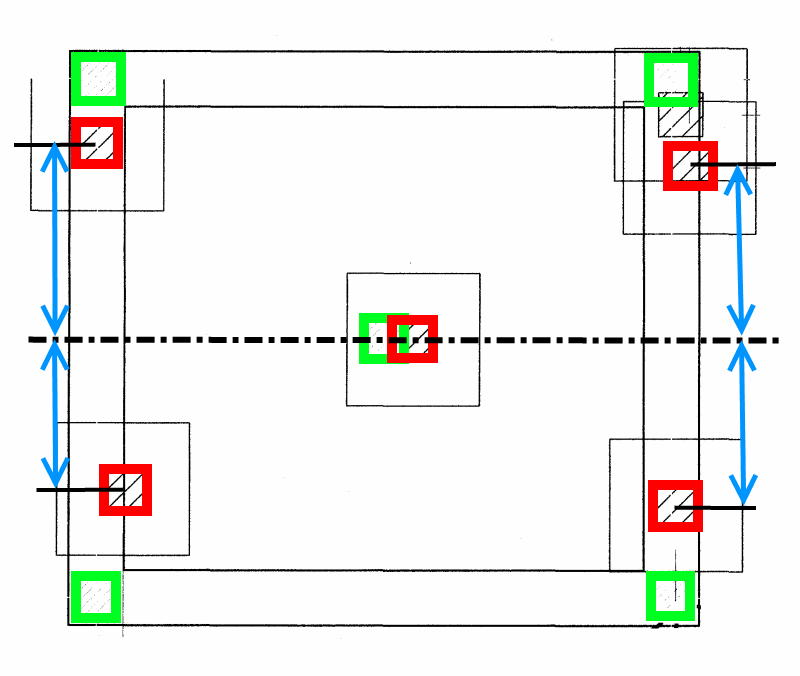drago8 - Since we don't know (geotechnical) pile capacity compared to (structural) pile load I can't just glance at the drawing and say things are fine. What I can say is there are at least three separate issues to address:
One issue involves the four perimeter pile. The pit walls "stiffen" the structure. Since the piles remain more or less directly under the walls the "strength" of the foundation is not really a concern... for those four piles.
The second issue is geometry of the as-built pile locations. Fortunately all four perimeter piles are dislocated in the same direction and roughly the same distance compared to both principal foundation centerline axes. Each of the four piles will share load (approximately) as intended in the original design. Check to see if the (geotech) allowable pile capacity was conservatively specified. If so, should be ok. The marked up sketch below highlights the relative displacement graphically for one axis. The center pile is not displaced a significant distance.
The third issue concerns the center pile and is perhaps the most important. I asked about slab thickness for a reason. Think of a pile as an upside-down column and the slab as the column's footing. Punching shear has to be considered. A slab that is 500 mm thick is not much of a pile cap. If the "square" on the drawing around the pile represents a build down, that will help. Check for punching shear, if it is a problem take appropriate action as a field change.
Enlarge the slab so that it completely covers the top of the as-built piles. The new edge of the slab should extend at least 75 mm beyond the edge of a pile so that the entire pile top is bearing on reinforced slab, not on the 75 mm (or so) of slab concrete rebar cover. Of course, the pit wall remain where they need to be.
BTW, the original design is NOT "pile-driver friendly". Design pile locations are way too close to design slab edges. There needs to be enough clearance so that a driven pile can be misplaced by a reasonable distance in any direction (often 75 mm) without having to make field changes to slab dimensions.
![[idea] [idea] [idea]](/data/assets/smilies/idea.gif)
![[r2d2] [r2d2] [r2d2]](/data/assets/smilies/r2d2.gif)

![[idea] [idea] [idea]](/data/assets/smilies/idea.gif)
![[r2d2] [r2d2] [r2d2]](/data/assets/smilies/r2d2.gif)
